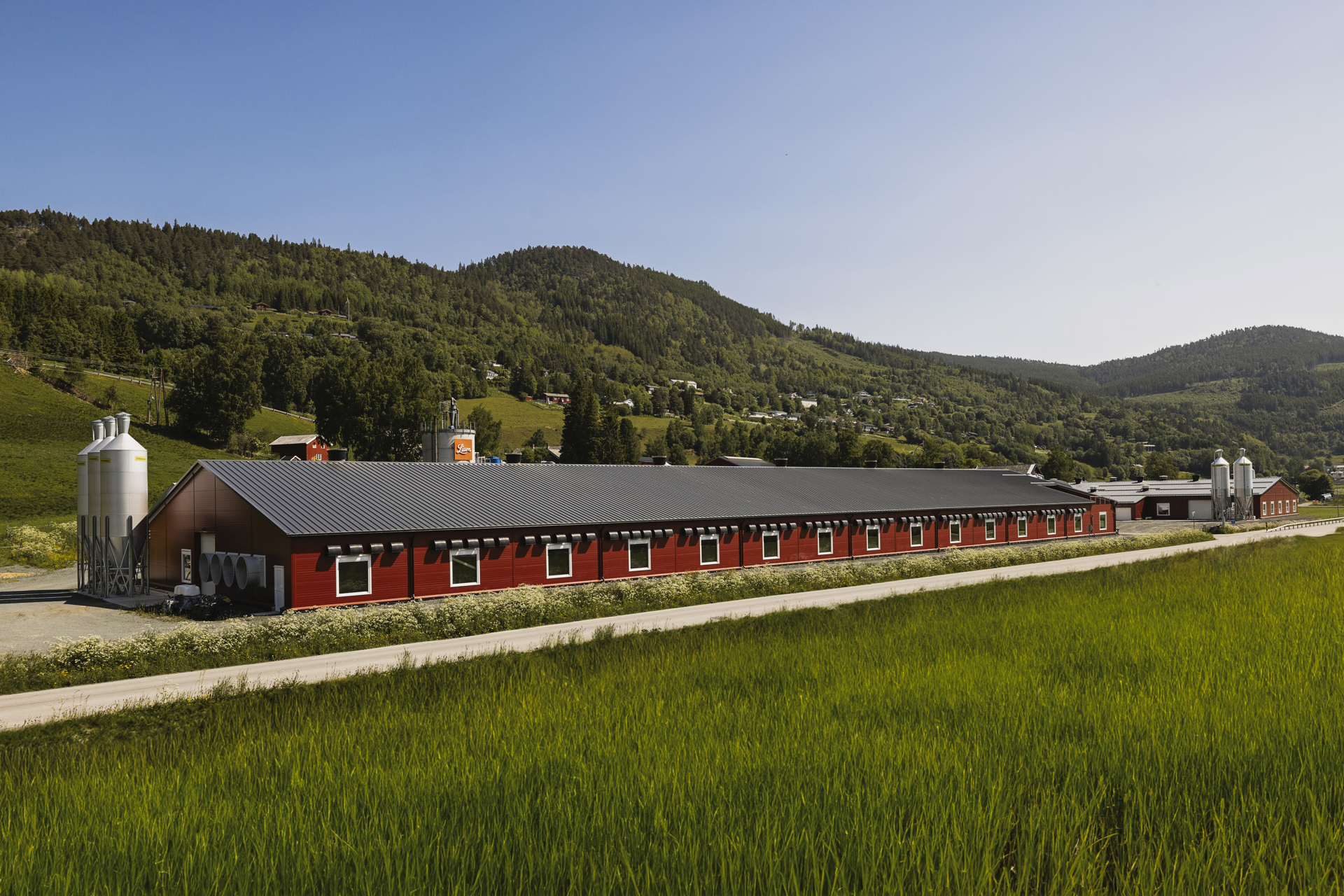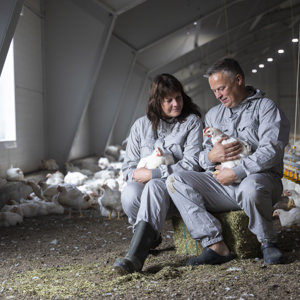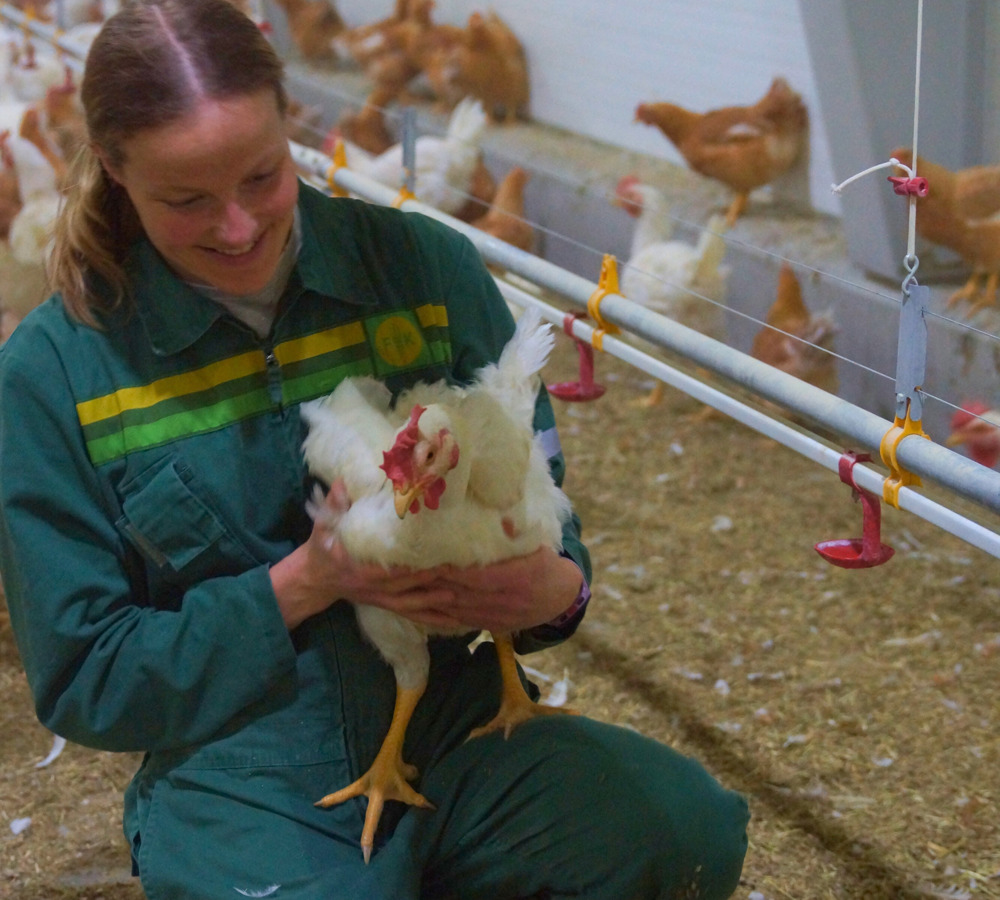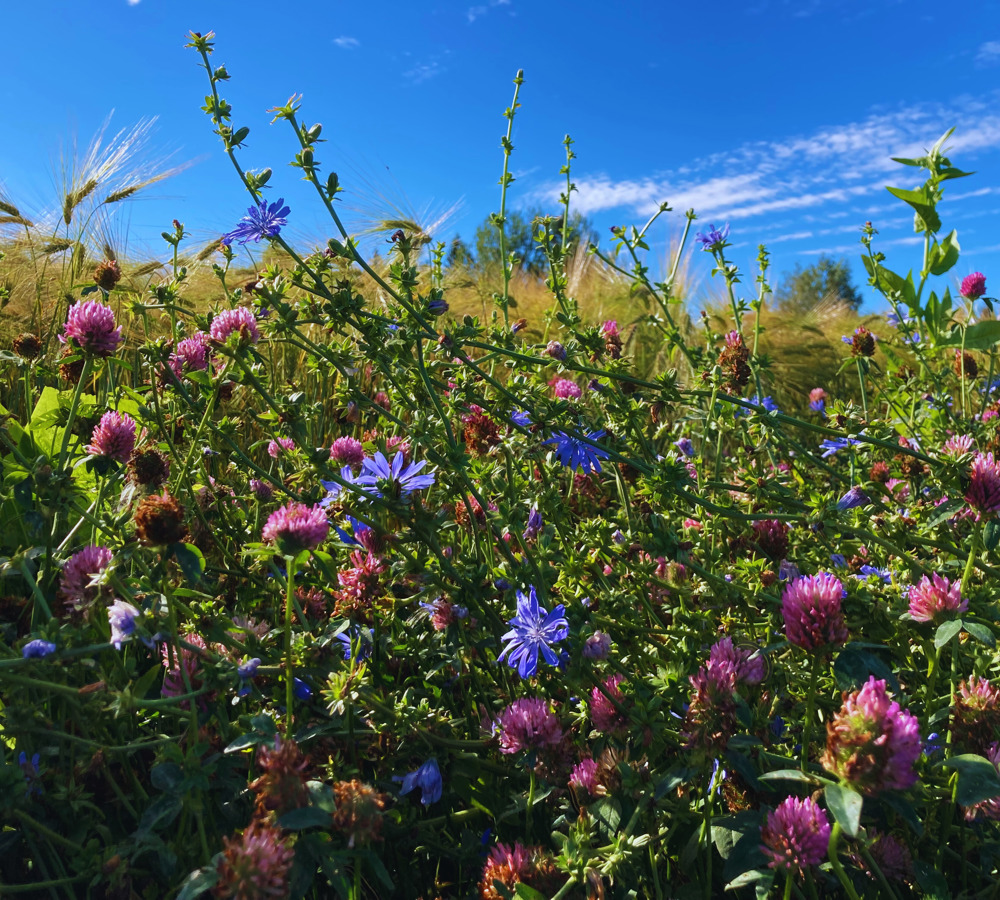Sustainable farming

Everything starts on the farms. Good animal welfare, feed with a low climate footprint, production of renewable energy, and efficient resource utilisation are important focus areas for sustainable agriculture. Farmers play a key role in this development.

We have taken the green transition seriously, and it's motivating to see that the measures we've implemented are being recognised.
Role models in sustainable farming
Tove and Snorre Hellesvik, broiler farmers at Norsk Kylling, were semifinalists for the 2024 Agricultural Sustainability Prize. The prize recognises farmers who have taken concrete steps towards more sustainable and profitable farming practices. Although Tove and Snorre didn’t win, it is a great honor to be one of the twelve farms in the country delivering at the top level of climate-smart farming.
– This is an important recognition of the work we've put in to make our operations more sustainable. We have taken the green transition seriously, and it's motivating to see that the measures we've implemented are being noticed, says Tove and Snorre.
The jury's reasoning
Tove and Snorre Hellesvik from Trøndelag were nominated for the Agricultural Sustainability Prize for their commitment to sustainable broiler chicken production. Together, they operate two farmhouses with a capacity to produce up to 280,000 chickens annually. They have taken several steps to reduce the farm's carbon footprint, such as installing solar panels on the roof to cover their energy needs and using woodchip heating. The farm places great emphasis on animal welfare, with slow-growing chickens that have ample space and access to activities that stimulate natural behavior.
The jury believes that Tove and Snorre demonstrate that it is possible to run a profitable farm while focusing on environmentally friendly energy solutions and high animal welfare. They inspire other farmers to combine economic success with responsibility for the environment.

We aim to be as self-sufficient as possible with resources and focus on reuse where possible. On the farm, we have a wood chip heating system powered by chips from our own forest, as well as a heat recovery unit that utilises heat from the animal room. In the long term, we plan to install solar panels. Efficient resource utilisation is not just about today’s operations – it is also an investment in the future and for generations to come.
Energy and resource use
The farmers we collaborate with are at the forefront when it comes to investing in environmentally friendly energy sources and technology. Many have adopted biofuels and solar panel systems, as well as energy-efficient ventilation systems and heat recovery solutions.
As much as 67 percent of the farmhouse area in the value chain is now powered by renewable energy. This corresponds to a 44 percent reduction in emissions since 2020. Smart choices in the farmhouse, combined with more efficient resource use, make a big difference, both for the environment and for the food we produce.

Collaboration for pollinating insects
Since 2021, we have had an annual project where farmers sow flower strips along their fields to enhance insect biodiversity. The project was initiated in collaboration with NIBIO and Felleskjøpet, and it has helped us confirm that the flower strips are an important food resource for pollinating insects. In 2024, we had 16,000 square meters of flower strips on the farms, and 10,000 square meters around the processing plant.